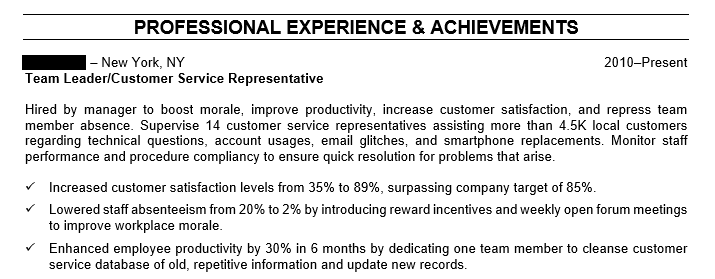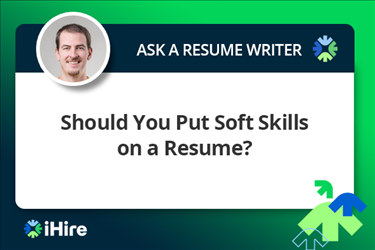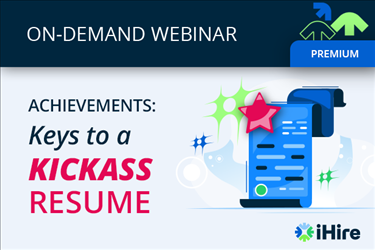- Job Seeker Resources
- |
- Last Updated: February 08, 2023

Resume Writing 101: Professional Experience Section
The meat of your resume
Now that we've covered the introduction, let's discuss how to write the work experience section of a resume – where you've worked, why you were hired, what you did there, and why it mattered. While the professional experience section must include your job duties and level of responsibility, it should also highlight your accomplishments – the RESULTS of your hard work.
Shouldn't I save my achievements for the interview?
Absolutely not – without exciting information in your resume, you may never get the opportunity to interview. If you show the value you brought to past employers, hiring managers will be excited to learn more about you and how you may be able to contribute to their organization.
Learn How iHire's Resume Builder Tool Can Help You Stand Out
General Guidelines
There are three main strategies for presenting your professional experience: chronological, functional, and hybrid. For now, we'll focus on the chronological format, since it’s the most commonly used.
Here’s are some key guidelines on how to write the work experience section of a resume:
- List your past positions in reverse chronological order – most recent at the top.
- Present previous jobs in past tense and current jobs in present tense.
- Include brief company descriptions to give employers an idea of the different environments you've worked in – number of employees, industry, competitive ranking, yearly revenue, etc.
- If you’re worried about being a victim of ageism, only include jobs you’ve held within the past 10 years. If you’d like to highlight jobs you had more than 10 years ago, put them under “Additional Experience” and remove the dates.
- Keep your job duties and responsibilities paragraph concise. Employers are most interested in the results of your efforts.
- Bullet ONLY your accomplishments so they jump off the page and catch the reader's attention.
- In your bullets, include facts and figures to further illustrate your positive impact.
Find your dream job. Register with iHire.
Resume Example
Now, take a look at the example below of a strong professional experience section. This job seeker included a brief paragraph outlining their daily duties followed by a bulleted list of achievements with measurable results.
See how the accomplishments are clearly separated from the job responsibilities? Using bullets ONLY for your accomplishments makes it easy for the reader to locate the details they're really looking for – how you'll positively impact operations, and ultimately, their bottom line. If you can use metrics to back up your achievements, even better. Facts, figures, and percentages speak volumes about what you can do for your next employer and give credibility to your claims.

The professional experience section is the meat of your resume, so it’s important to make it count. Remember to focus on the results of your achievements and how they made a positive impact on the company – this is much more likely to get you called in for an interview than a simple list of responsibilities. Next, learn how to get past Applicant Tracking Systems (ATS) and highlight your key skills with our Resume Writing 101 article on the core competencies section.

December 13, 2019
Sign In or Register to access all articles and insider tips for help in your job search.
Search for iHire Jobs
RELATED JOBS
RELATED RESOURCES
Find the Right Job Faster
- Get personalized job matches sent to your inbox every day
- Connect directly with employers before your competition
- Advance your career with expert advice on interviewing, salary negotiation, and more
We value your privacy




